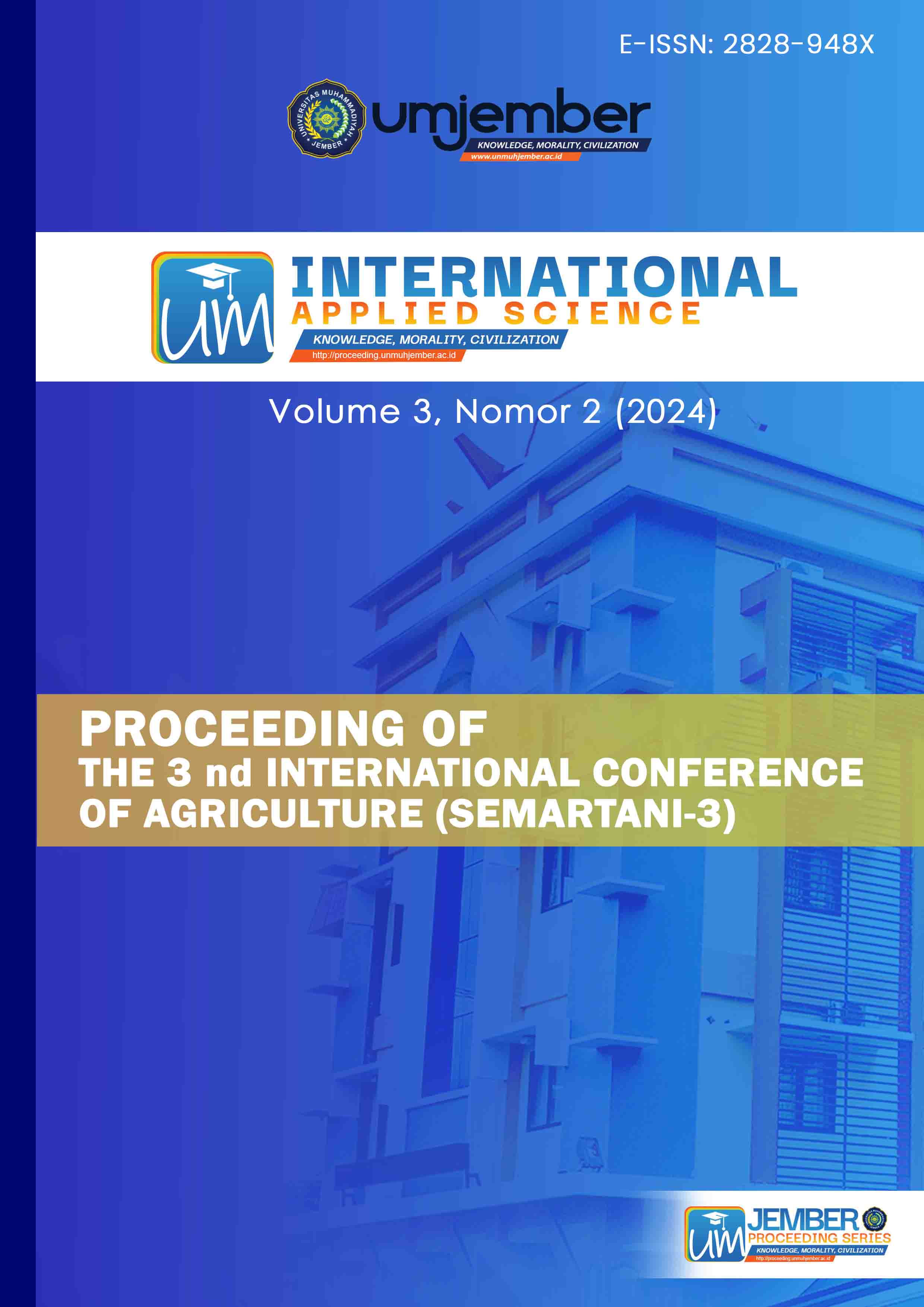Chemical Analysis and Shelf Life Estimation of Rose Flower Tea With Variation of Drying Time
DOI:
https://doi.org/10.32528/ias.v3i2.638Keywords:
Rose Flower, Drying, Tea Chemical Characteristics, Shelf LifeAbstract
Roses from Karangpring Village are a mainstay of Jember Regency and are widely used as sowing flowers. In addition to sowing flowers, roses can also be processed into various processed products such as tea bags, rose jam, candy agar. In making rose tea, the drying process greatly affects the quality and chemical content of the tea. This study aims to determine the effect of temperature variation and drying time on chemical characteristics, organoleptic test, and shelf life of rose flower tea. The materials used were rose flowers, DPPH solution, ethanol, distilled water, amylum solution, ascorbic acid, gallic acid, Na2CO3 7.5%, Follin-Ciocalteu, KCL, HCL, acetic acid, sodium acetate, AlCl3, quercetin. The main tools used in this study are measuring flask, centrifuge, micro pipette, erlenmeyer, UV-VIS spectrophotometer, oven, cup, balance, vortex tube, test tube. Based on SNI dry tea in packaging 3836: 2013 polyphenol content in tea products has a minimum value of 5.2% and a maximum value of water content of 8.0%, thus the polyphenol content and water content of rose flower tea are included in the category set by SNI dry tea in packaging. The highest water content value was found in the P3 treatment of 0.940%, antioxidant content value of 39.181%, polyphenol content of 32.312 mg GAE/g, anthocyanin content value of 4.713%, vitamin C content value of 29.371%, flavonoid content value of 42.521 mg QE/g. The results of the organoleptic test showed that panelists gave scores to treatment P2 with a drying temperature and time of 60oC for 5 hours, and had a shelf life of 17 days.
Downloads
References
Andarwulan, N., Wijaya, C.H., & Cahyono, D.T. (2012). Aktivitas antioksidan dari daun sirih (Piper betle L.). Buletin Teknologi dan Industri Pangan. 7:29–37.
Dewi, W.K., N, Harun., dan Y, Zalfiatri. (2017). Pemanfaatan Daun Katuk (Sauropus adrogynus) dalam Pembuatan Teh Herbal dengan Variasi Suhu Pengeringan. Jom Faperta. 4(2).
Fitrayana, C. (2014). Pengaruh Lama dan Suhu Pengeringan Terhadap Karakterisktik Teh Herbal Pare (Momordica charantia L). Bandung: Universitas Pasundan
Jahangiri, Y., H. Ghahremani., J.A. Torghabeh.,dan E.A. Salehi. 2011. Effect oftemperature and slovent on the totalphenolic compounds extraction fromleaves of Ficus carica. Journal of Chemi-cal and Pharmaceutical Research. 3(5):253-259.
Martini, N. K. A., I. G. Ayu ekawati., dan P. Timur Ina. 2020. Pengaruh Suhu dan Lama Pengerin-gan Terhadap Karakteristik Teh Bunga Telang (Clitoria ternatea L.). Jurnal Itepa, 9 (3) September 20020, 327 – 340.
Mukaromah, U., Susetyorini, S. H., Aminah, S., (2010). Kadar Vitamin C, Mutu Fisik, pH Dan Mutu Organoleptik Sirup Rosella (Hibiscus sabdariffa, L) Berdasarkan Cara Ekstraksi. Jurnal Pangan dan Gizi. Vol. 01 No. 01.
Wijana, S., Sucipto, dan L. M. Sari. (2014). Pengaruh Suhu dan Waktu Pengeringan Terhadap Ak-tivitas Antioksidan pada Bubuk Kulit Manggis (Garcinia mangostana L.). Tesis. Fakultas Teknologi Pertanian Universitas Brawaijaya.
Yuliani. (2013). Efek Suhu dan Lama Pemanasan Terhadap Sifat Fisika-Kimia Bubuk Pewarna Dari Kelopak Bunga Rosela (Hibiscuss sabdariffa L.) yang dihasilkan. Prosiding Seminar Nasional Kimia:121.
Downloads
Published
How to Cite
Issue
Section
License

This work is licensed under a Creative Commons Attribution-NonCommercial 4.0 International License.


